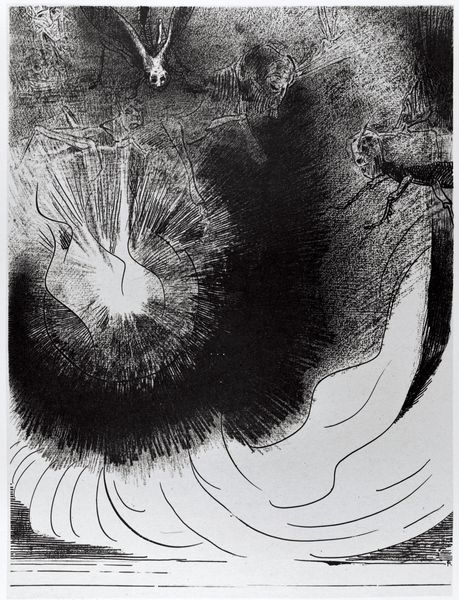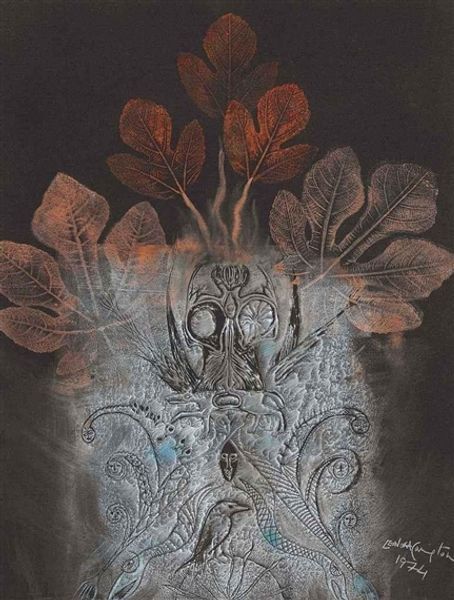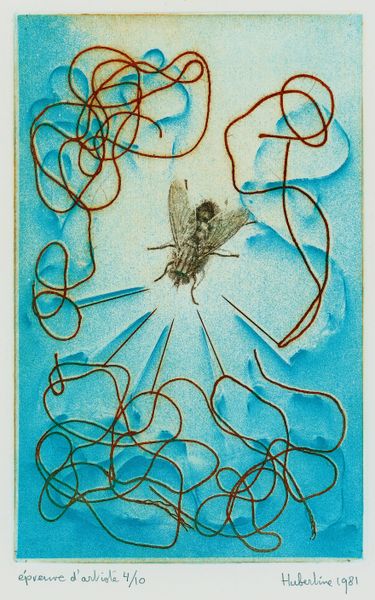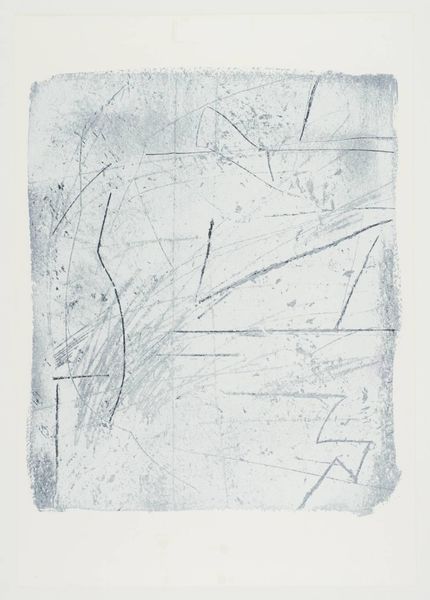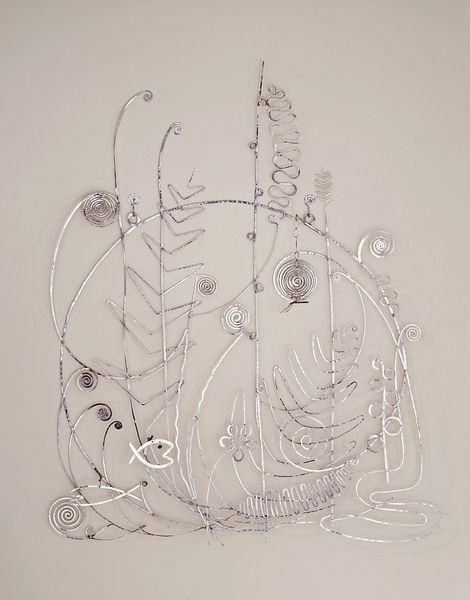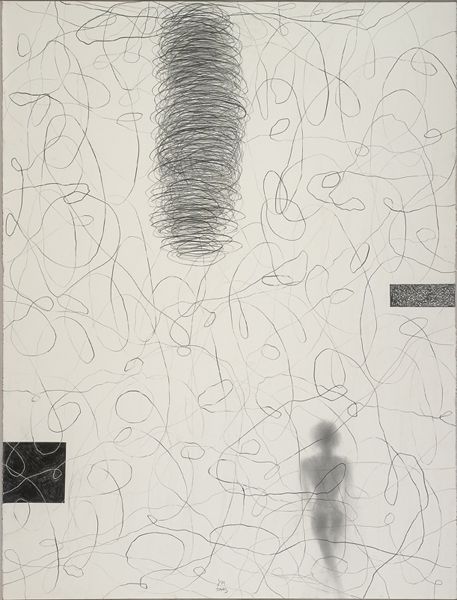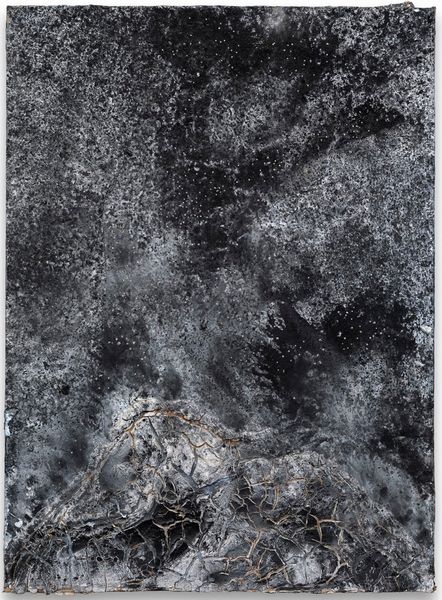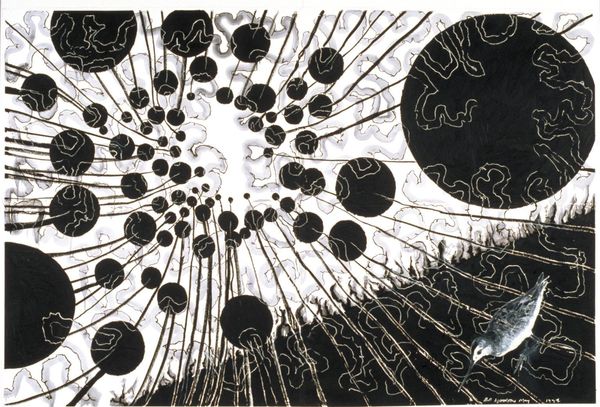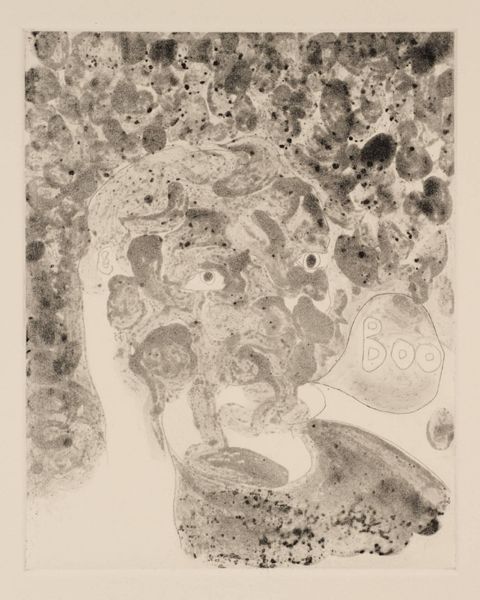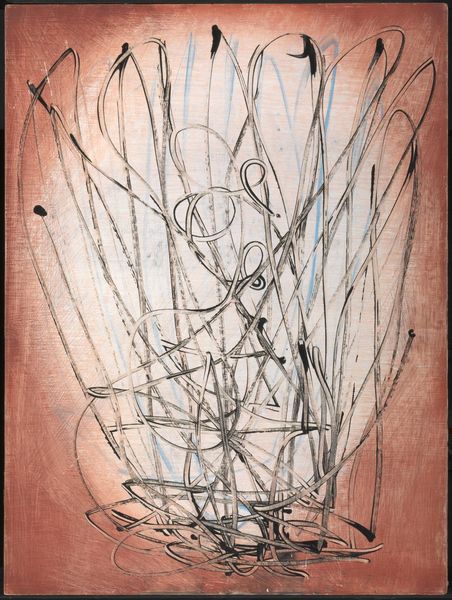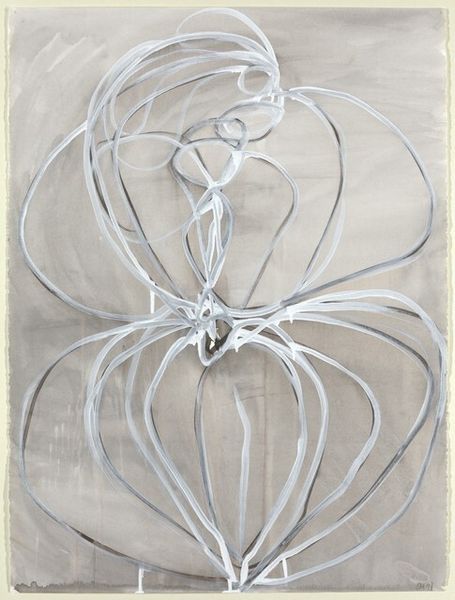
print, linocut
# print
#
organic shape
#
linocut
#
abstract
#
linocut print
#
geometric
#
modernism
Dimensions: image: 50.17 x 40.64 cm (19 3/4 x 16 in.) sheet: 66.99 x 56.52 cm (26 3/8 x 22 1/4 in.)
Copyright: National Gallery of Art: CC0 1.0
Curator: Standing before us is Al Taylor’s "Untitled (Large Map)," a striking linocut print from 1988. It's deceptively simple in its monochrome palette. Editor: My initial sense is…rain, seen through a very smudged lens. All these circles expanding outward – there’s a melancholic feeling to it. Curator: That's interesting. Formally, these organic shapes overlay a complex matrix of textures, created by the linocut technique. You see the deliberate mark-making, right? Each line contributes to the overall visual tension. Editor: Oh, definitely deliberate! Like the hand wanted it chaotic. Are those bold, dark shapes just haphazardly placed or are they trying to form recognizable geometry, a coded signal in this abstract downpour? Curator: Precisely. These darker, elongated shapes—almost like fingers pointing in different directions— disrupt the radial patterns and pull the eye in multiple directions. Consider Taylor's broader body of work; he was fascinated with the intersection of the artificial and the natural. This print dances on that boundary. Editor: So, are these supposed to represent a world of connections… distorted and blurred by our limited perception? Is this “map” supposed to hint at a world we can't navigate? Because all of this reminds me that even in art, clarity doesn't always equal truth. Curator: The beauty here lies, perhaps, in its ambiguity. A formalist reading might emphasize the push-and-pull of figure and ground, the interplay of light and shadow... Editor: While I will stick to my belief in a dream-world fog… this exploration of abstraction shows we need to constantly push at what something “should” represent to realize how much our emotional state impacts our critical thinking. What would a "clear" map even mean, anyway? It is our emotions and memories which orient us. Curator: Indeed. Taylor’s map invites us to lose our way, so to speak, and consider how lines and circles can create a space ripe for imagination.
Comments
No comments
Be the first to comment and join the conversation on the ultimate creative platform.
